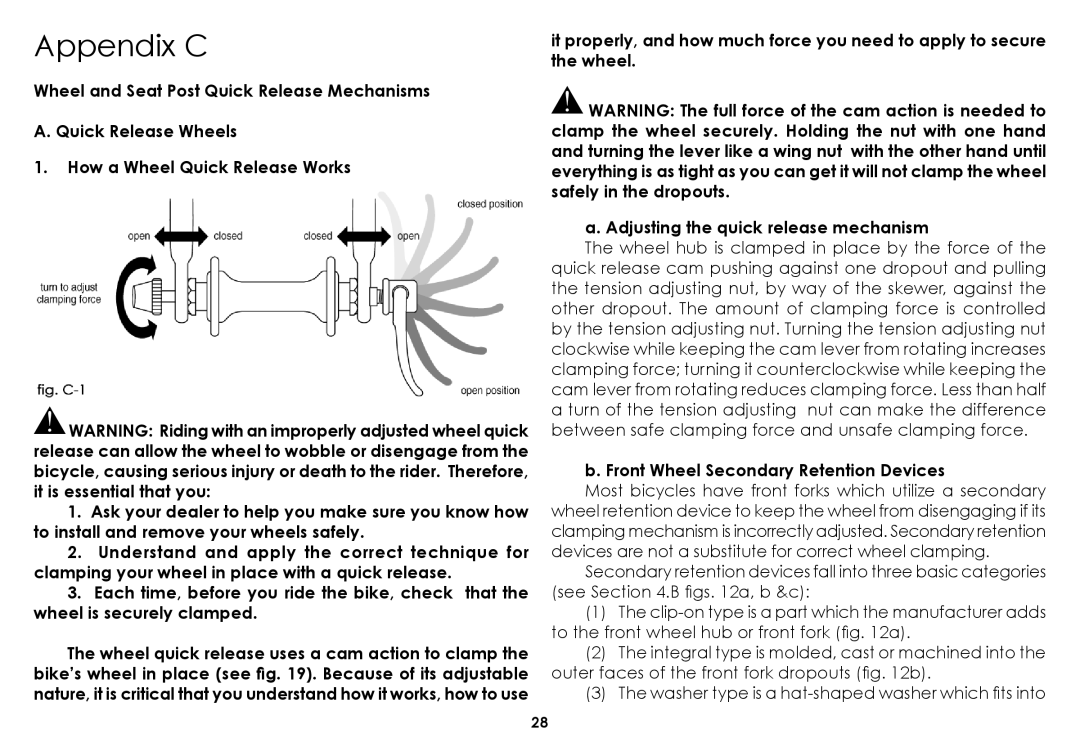
Appendix C
Wheel and Seat Post Quick Release Mechanisms
A. Quick Release Wheels
1.How a Wheel Quick Release Works
!WARNING: Riding with an improperly adjusted wheel quick release can allow the wheel to wobble or disengage from the bicycle, causing serious injury or death to the rider. Therefore, it is essential that you:
1.Ask your dealer to help you make sure you know how to install and remove your wheels safely.
2.Understand and apply the correct technique for clamping your wheel in place with a quick release.
3.Each time, before you ride the bike, check that the wheel is securely clamped.
The wheel quick release uses a cam action to clamp the bike’s wheel in place (see fig. 19). Because of its adjustable nature, it is critical that you understand how it works, how to use
it properly, and how much force you need to apply to secure the wheel.
!WARNING: The full force of the cam action is needed to clamp the wheel securely. Holding the nut with one hand and turning the lever like a wing nut with the other hand until everything is as tight as you can get it will not clamp the wheel safely in the dropouts.
a. Adjusting the quick release mechanism
The wheel hub is clamped in place by the force of the quick release cam pushing against one dropout and pulling the tension adjusting nut, by way of the skewer, against the other dropout. The amount of clamping force is controlled by the tension adjusting nut. Turning the tension adjusting nut clockwise while keeping the cam lever from rotating increases clamping force; turning it counterclockwise while keeping the cam lever from rotating reduces clamping force. Less than half a turn of the tension adjusting nut can make the difference between safe clamping force and unsafe clamping force.
b. Front Wheel Secondary Retention Devices
Most bicycles have front forks which utilize a secondary wheel retention device to keep the wheel from disengaging if its clamping mechanism is incorrectly adjusted. Secondary retention devices are not a substitute for correct wheel clamping.
Secondary retention devices fall into three basic categories (see Section 4.B figs. 12a, b &c):
(1)The
(2)The integral type is molded, cast or machined into the outer faces of the front fork dropouts (fig. 12b).
(3)The washer type is a
28
